Microsoft SharePoint Tips: 18 Useful Techniques for Beginners in 2026
SharePoint serves as anything from a document management system to a communication and collaboration platform. With so much functionality, it may seem difficult knowing how to get the most out of the software. Fear not; we’re here to help with this extensive collection of SharePoint tips and tricks.
Microsoft SharePoint is an excellent tool to improve your online document management. For most, it’s exceptionally easy to use; however, inexperienced users may not know how to get the most out of the platform. Thankfully, we do, and in this article we are sharing some of our favorite SharePoint tips.
Key Takeaways:
- Our SharePoint best practices, combined with some useful tips and tricks, will allow you to get the most out of the software.
- We’ve divided our best practices up into categories, making it easy for you to pick and choose which (if not all) you wish to implement.
- For best results, we suggest using these best practices as soon as you get going with SharePoint. They’ll make your life much easier in the long run.
At its core, SharePoint is a digital tool for creating an online document library (or document management system), but it offers a lot more.
The platform is a fantastic way of communicating updates to a small group or everyone in your business. Plus, once you know your way around SharePoint Online, your document management and communication will flow smoothly on a daily basis.
This guide will cover the best practices for using the tool, but if you want to learn more about SharePoint and how good the product is, we recommend taking the time to read our SharePoint review.
10,000+ Trust Our Free Cloud Storage Tips. Join Today!
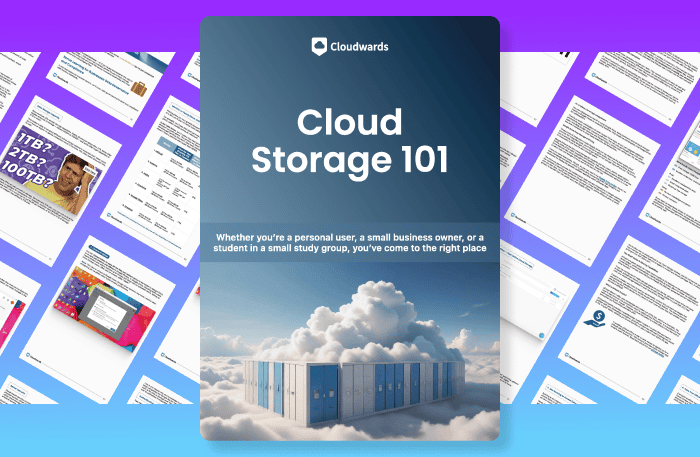
- Demystify cloud storage terminology and key concepts in plain language
- Discover easy-to-implement techniques to securely backup and sync your data across devices
- Learn money-saving strategies to optimize your cloud storage costs and usage
-
10/13/2022 Facts checked
We have rewritten our tutorial to include more tips and best practices that are reflective of the current iteration of SharePoint.
18 Microsoft SharePoint Tips & Best Practices
Because SharePoint is a diverse tool in terms of functionality, we’re going to break down our tips into different categories. Each category will cover the core of what SharePoint does, and we’ll share some miscellaneous tips that you may find useful toward the end.
Creating a SharePoint Site
After setting up your SharePoint Online account, the first step is to create either a communication or team site (or both). While creating a site requires minimal effort, there are some steps you can take to ensure you create the best type of site possible for your needs.
1. Understand the Different Types of Sites
SharePoint offers two different types of sites: communication sites and team sites. There’s some crossover between the two, but before you spend time creating a site (either from scratch or with a site template,) it’s best to know the purpose of each and identify how they align with your needs.
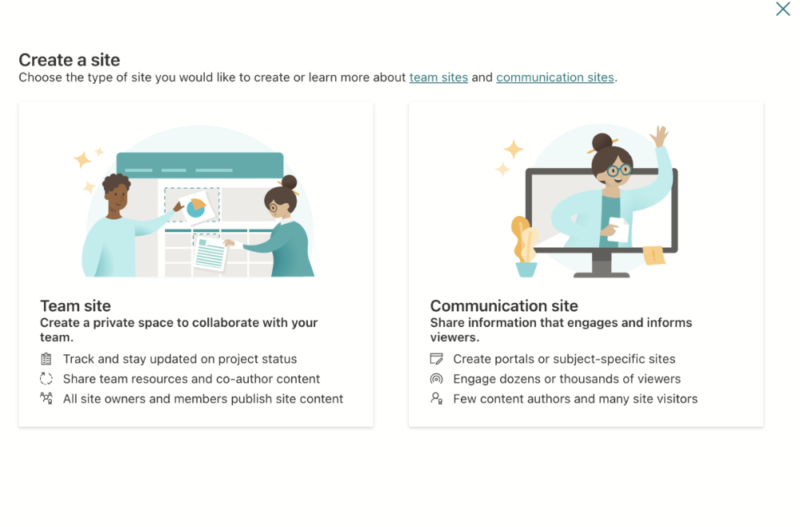
For example, SharePoint team sites are best used for collaborative work, as a space where two or more team members will create and develop documents simultaneously.
The communication sites tend to be managed by fewer users, and used to send out updates to other team members. Unlike the team sites, most members only have site permissions that allow them to view a SharePoint page, rather than edit it.
2. Add Another Site Owner
The site owner is responsible for managing all the content on the SharePoint pages and sites. That means they’ll be responsible for assigning roles and permissions to other team members.
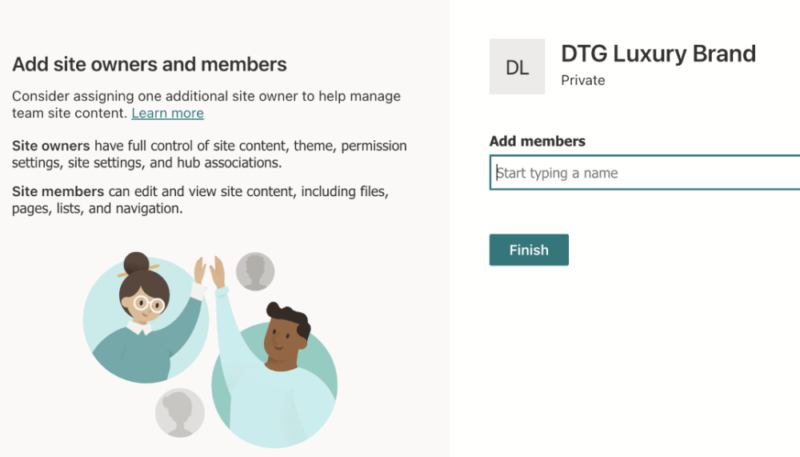
Think of the site owner as a SharePoint pages administrator, overseeing all the day-to-day activities on the site. Depending on the size of your team, keeping the ship sailing could be a challenge.
When setting up a new SharePoint site, you have the option of adding another site owner. If you have the resources, it’s a good idea to share the workload. There’s no need to be proud and think you can do it all solo, and having two site owners often leads to a more fluid and consistent way of working.
3. Read the Communication Site User Guides
After setting up a communication site, you’re greeted with several blocks that include plenty of information on how to get the most out of Microsoft communication sites.
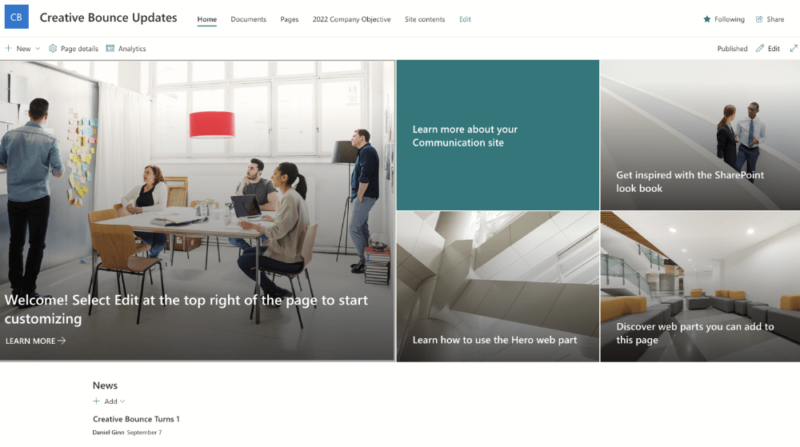
While it may be tempting to ignore them and just wing it, don’t. There’s lots of valuable information, including how to use site templates and how to create unique and stunning communication site designs.
4. Create SharePoint Hub Sites
Depending on the size of your business and your need for using SharePoint, it may be necessary for you to create multiple communication and team sites. Some of these sites may cross over and team members may send multiple access requests across your sites. Thankfully, there’s a way to bring them all together and create some centralized site structure.
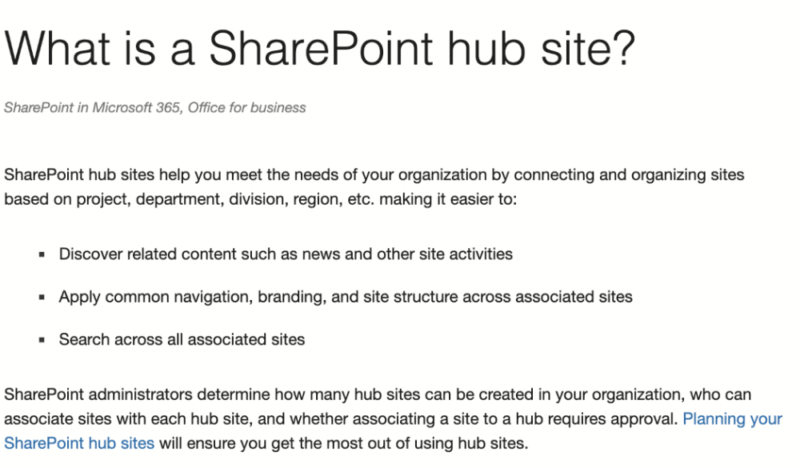
SharePoint hub sites provide a space to cluster your different sites together and essentially create a company intranet for your business. Hub sites do take a lot of prior planning and developing them will take quite some time, but they’re worth it. Thankfully, Microsoft offers an extensive hub site guide to help you get started.
Document Library
A document library is your way of creating categories that pertain to different topics. You can create a filing system within each of your categories, and also link them to specific teams and team members.
5. Brainstorm Document Libraries Outside of Sharepoint
To ensure you hit the ground running with your SharePoint sites, it’s a good idea to brainstorm ideas for the types of document libraries you will need when shifting to the platform.
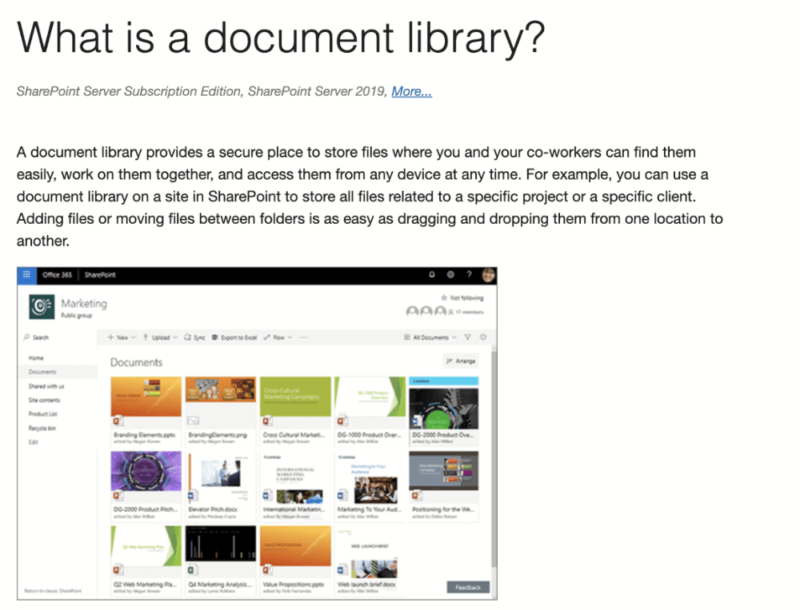
Once you have come up with the core categories for your documents, it’s simply a matter of creating them inside SharePoint, allowing you to get on top of the organization as quickly as possible.
6. Make the Most of Descriptions
Each time you create a document library, you’re given the option of writing a description to describe the type of content the library will include. It may be tempting to skip this part, but that’s not a good idea.
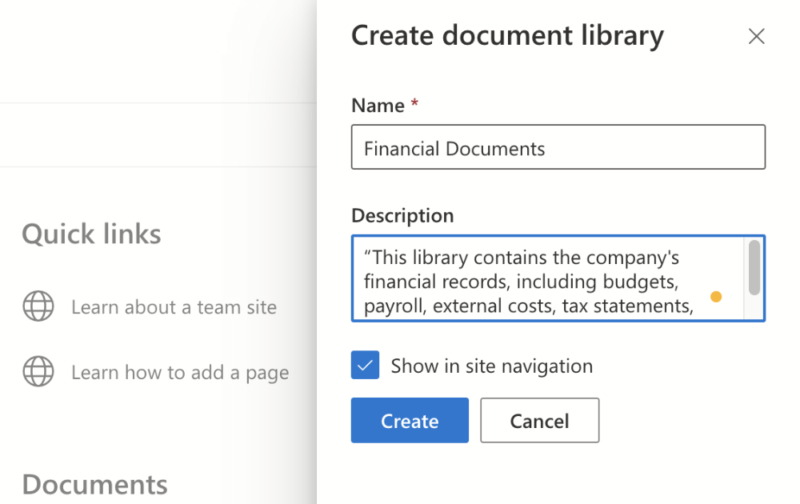
Instead, write a clear description so that other users can quickly understand what type of documents live in a particular document library. This is especially useful for when you add new users to your SharePoint team site.
To give you an example, let’s say you’re creating a SharePoint document library for your financial documents. In the description, rather than writing “financial docs,” instead write “This library contains all of the company’s financial records, including budgets, payroll, external costs, tax statements and reports.”
7. Name Your Documents Correctly (and Consistently)
SharePoint offers exceptionally good search functionality, making it easy to find the documents you need. However, a great search tool needs good data, and that part comes down to you. To ensure you can always find a document, make sure you develop a consistent and easily understandable naming structure for the documents within your libraries.
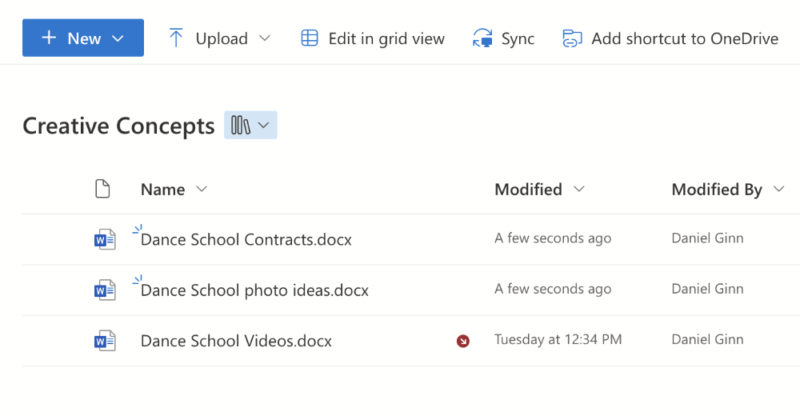
Don’t get lazy (we’re all guilty of doing so). Each new document you create within SharePoint is automatically named “document.” Before creating the body of the document, give it a name and ensure that the title makes it clear what the document is about.
8. Add Image Tags to Your Documents
To simplify your searches, it’s a good idea to add tags to images within your documents. It’s simple to do and only takes a few moments of your time. This way, if the name of a specific document slips your mind, you can search for a tag that’s most likely going to be assigned to that document.
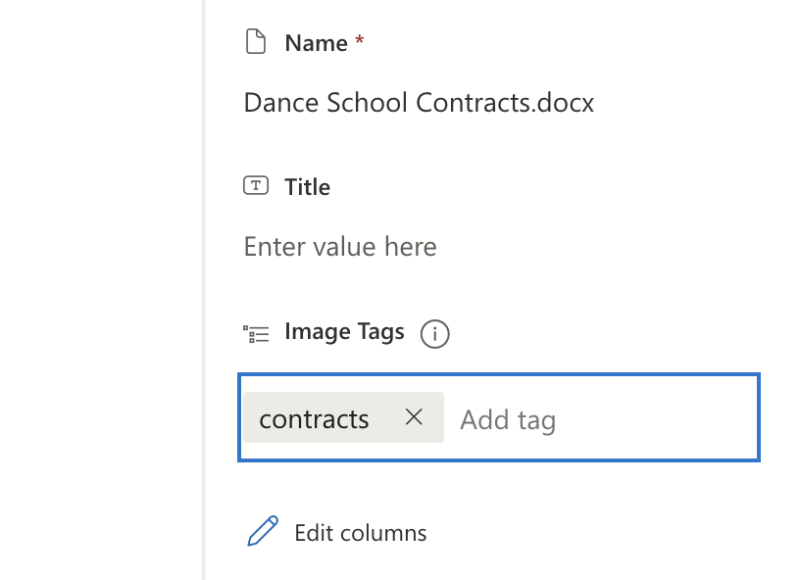
Use multiple tags that really pertain to the images in the document. The more specific the tags, the easier it will be to find the documents. Rather than writing “HR records,” for example, write “staff absences.”
9. Pin Important Files and Folders
Each of your document libraries likely includes documents that are more important or referred to more frequently than others. To ensure you and your team get quick access to these documents, you can pin them at the top of your document library.
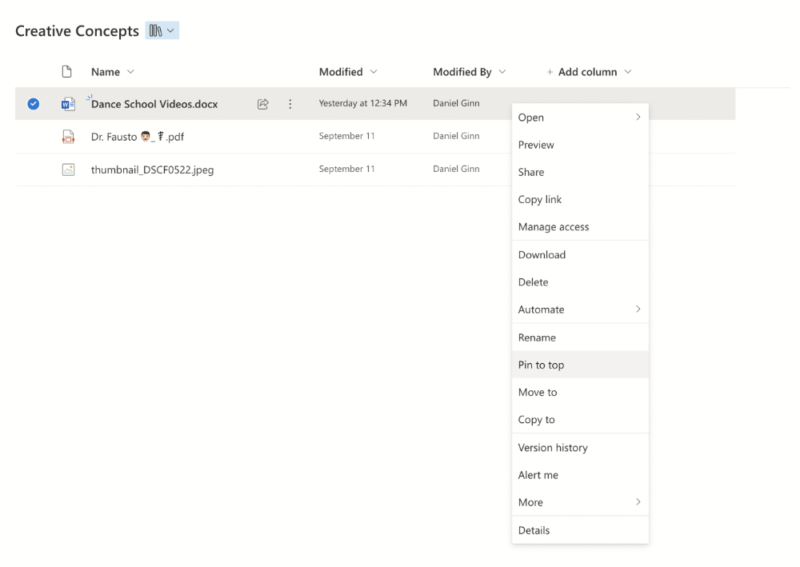
This means that — regardless of the file name — they will be at the top of the list, and will be the first files you see when you go into the library.
To do this, simply right-click on the file or folder you want to pin and select “pin to top” from the dropdown menu.
10. Sync Libraries to OneDrive
SharePoint and OneDrive have a symbiotic relationship. Because of that, it’s possible to access your document libraries from your desktop via OneDrive. You’ll first need to install OneDrive on your desktop and then return to your online SharePoint account.
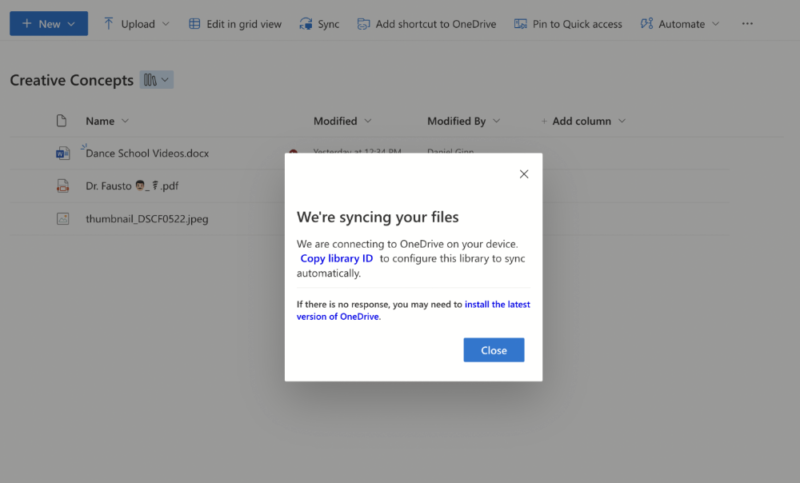
Inside each document library, you’ll see “sync” located in the top menu. Select it and allow it to connect to your OneDrive account (read our OneDrive review). As long as you’re using the same account, you can then access your SharePoint files inside OneDrive. If you’re a Windows user, you’ll also be able to search and view files via File Explorer.
11. Understand File Version History
We’re all prone to errors, and it’s not uncommon to accidentally edit the wrong document or mistakenly delete a passage of text. The good news is that SharePoint offers version history, which allows you access to previous versions of a document.
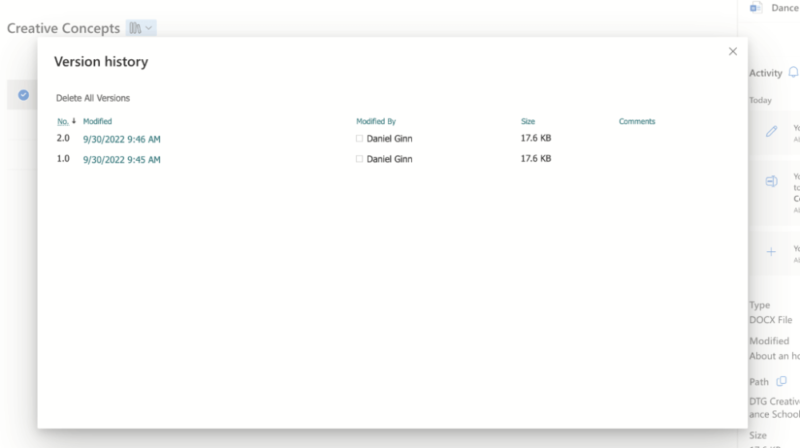
To access a previous version of a document, simply right-click on the document and select “version history.” You’ll then see a list of all the previous versions of the document and you can select the version you want to revert back to.
File Sharing
One of the main purposes of using SharePoint is that it allows you to share files and entire folders with other users in your organization. If you’re familiar with online file sharing, most of it is common sense, but below are some tips and tricks to know about.
12. Revoke Access to a File or Folder
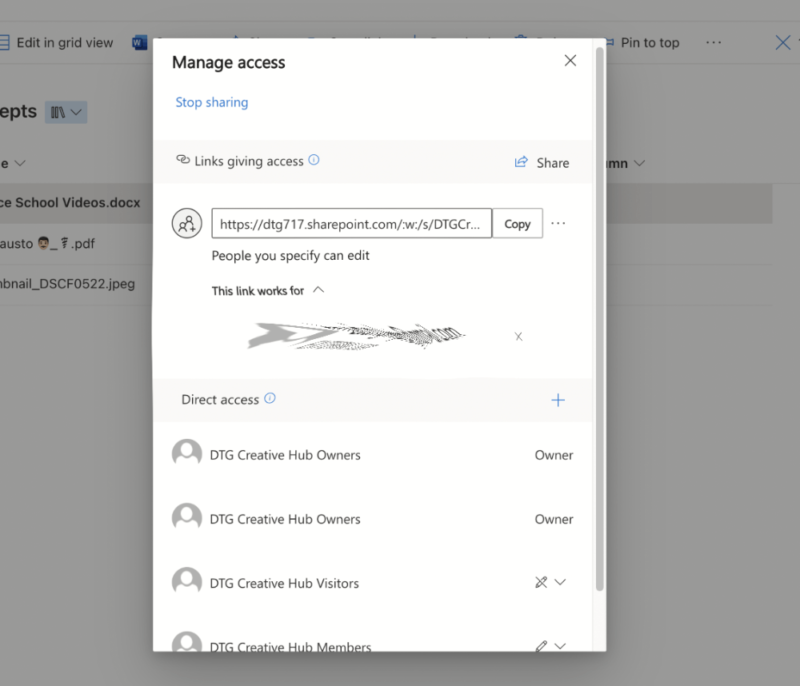
Whether you share documents with someone inside or outside your organization, there may come a time when you no longer need them to access it. With SharePoint, it’s possible to revoke access and remove the user permissions that were granted to a single user or several group members.
Select the file that you want to revoke access to and, on the right-hand side of the selected file, locate “manage access.” Removing others is easy; you just need to tap “X” and they will no longer be able to view, edit or comment on that document.
SharePoint Site Alerts
Continuing with our SharePoint tips and tricks, we’ll now take a look at SharePoint site alerts. Depending on the user’s role within the site, it’s possible to send and receive a range of notifications. In this section, we’ll show you how to best manage them.
13. Customize Your Alerts
Unless you want to get bombarded with constant notifications, it’s best to modify your SharePoint alerts in a way that suits you. This way you can get real-time updates or reports just the way you like them.
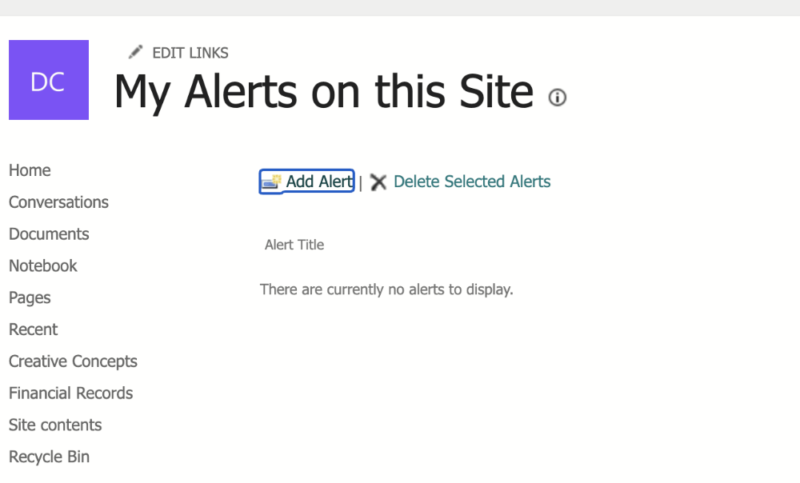
From inside your document folder or a document library, select the three ellipses in the top menu, then select “manage my alerts.”
Here, you can customize how you wish to receive your alerts (email or text notifications) and also when to receive them — like if someone modifies a document or creates a new file. You can also select instant alerts and a daily or weekly summary.
14. Program Who Receives Alerts
No one works 24 hours a day, seven days a week, so it’s impossible to see every alert as it comes through. This can lead to missing notifications for important documents, which can disrupt workflow.
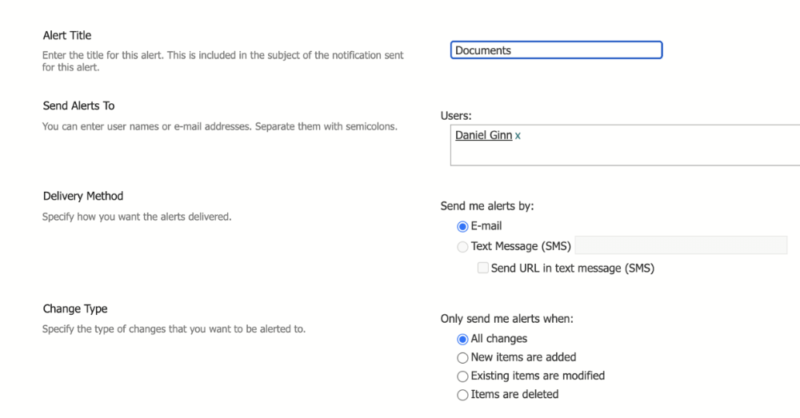
In your alert settings, it’s possible to authorize other team members to receive the same alerts as you. That way, if you’re out of the office, someone else can pick up new updates and act on them accordingly.
Microsoft Power Automate
One of the best practices to implement with SharePoint is to use its built-in automations. In SharePoint’s terminology, this process is known as “creating flows.”
15. Create Flow Automations
To create a flow, you need to go to one of your SharePoint libraries, select the three ellipses, select “integrate” and finally select “power automate.”
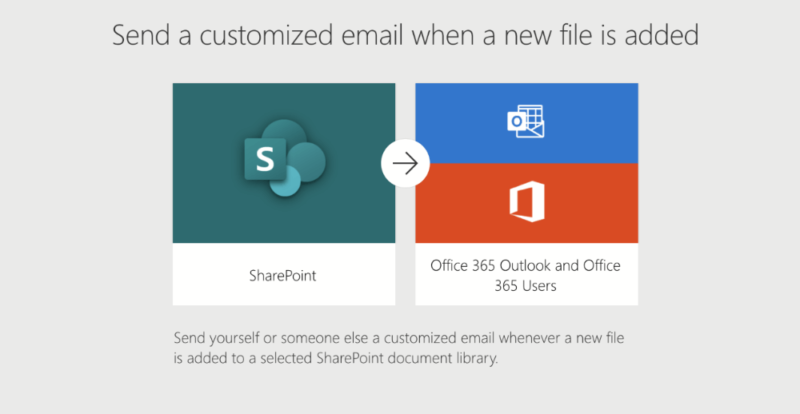
Here you can program SharePoint to send customized emails whenever a file is changed, automatically download email attachments to your SharePoint libraries and request managerial approval for important documents. You can also automate digital signature requests through Adobe Acrobat Sign and send document approvals through Microsoft Teams.
16. Create Basic Rules
Aside from the more advanced automations, users can also set up basic rules within SharePoint.
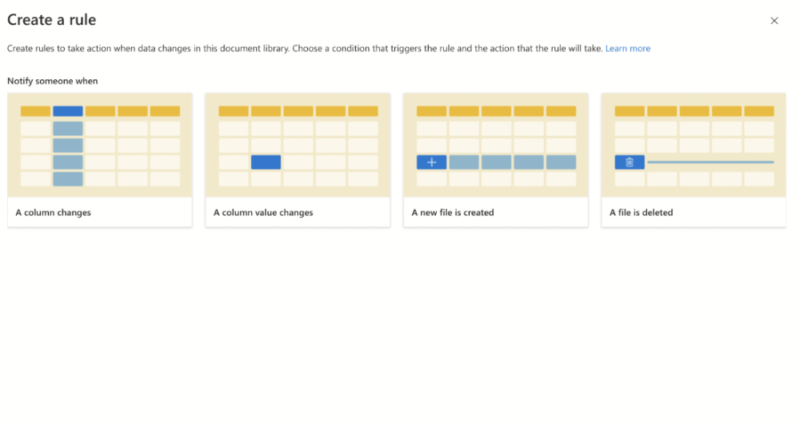
This is done through the “automate” tab, and here you can ask SharePoint to send an email when a new file is added or deleted, and when a column is modified or its value is changed.
Miscellaneous Tips
Below are some extra tips and ideas to try so you can get the most out of SharePoint. Most of them pertain to the lesser-used features that — although they may not be at the forefront of your workflow — certainly have plenty of value.
17. Use Notebook
You don’t always need to create detailed documents full of text, especially if you’re just putting together some professional ideas. Notebook (located in the left-hand menu) is part of SharePoint and allows you to log short notes, either as reminders or points of reference.
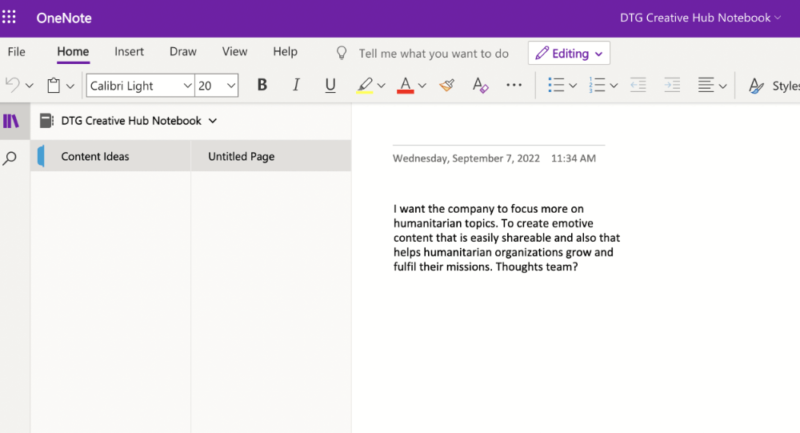
Think of it as a space to create digital sticky notes, which you can use for your own work or to share with others.
18. SharePoint Lists
SharePoint lists is not your traditional list-making app that you see in the best project management tools. Instead, it serves as more of a database where you can keep a record and track specific events happening in your business.
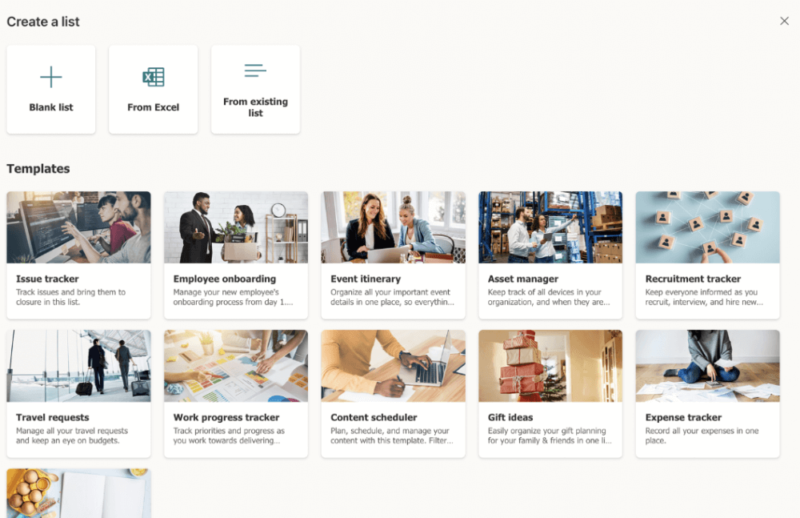
What’s great about the lists feature is that it comes with a diverse range of templates, allowing you to create a new SharePoint list with minimal effort on your part. Just as you can revert your document history, you can do the same with lists, allowing you to keep your records accurate even after changes have been made.
Final Thoughts
Now that you have these SharePoint tips and tricks, we’re certain you’ll be able to get the most out of the platform. For an optimal user experience, it’s a good idea to implement most of these best practices right away, so you can create a positive and productive culture in both your team sites and your communication sites.
For great results, we recommend sharing this SharePoint best practices article with your team, so they also understand how to use the platform.
Did you find this article helpful? What other tips and tricks do you have for SharePoint? Would you like us to write a similar article for another piece of software? Let us know in the comments. Thanks for reading.
FAQ
SharePoint has a wealth of information built directly inside the platform. Simply locate and select the “?,” and there you will find a range of topics that pertain to using SharePoint.
Microsoft offers both text-based and video tutorials for SharePoint. You’ll be able to find most of what you need; however, if you do become stuck, 24/7 support is available for some guidance.
Yes. Although you’ll likely need to spend some time working through the tutorials, for the most part SharePoint is easy to grasp right away, even for inexperienced users.
There’s no need to pay for SharePoint training. The platform itself comes with a wide range of tutorials to help you learn how to use the product.


